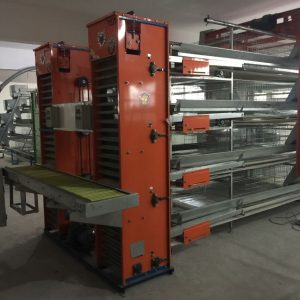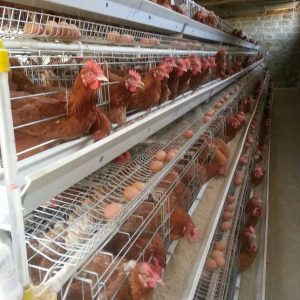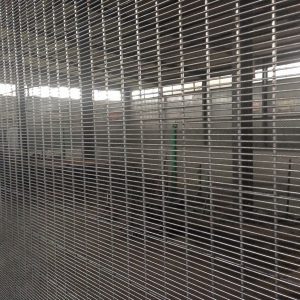
layer cages for sale in india
layer cages for sale in india Plastic greenhouse chicken farming has low investment, quick results and high benefits, and it has developed rapidly in rural areas. The technology of raising chickens in plastic greenhouses is suitable for broiler farmers and large-scale farms in agricultural and semi-agricultural and semi-pastoral areas.
1. Construction of plastic greenhouse
1. The choice of building site
The construction site selection of plastic greenhouses should be based on the principles of saving land, reducing investment, conducive to heat preservation, heatstroke prevention, and facilitating breeding management and production operations. Choose courtyards, village heads, roadsides, courtyards and other open spaces to build. It is also possible to start from the cultivation of soil power, choose high dry and thin ground, and build large-scale, fluid plastic greenhouse chicken farms in a planned way.
2. Materials needed for shed construction
(1) Thin bamboo poles, 3-5 cm in diameter and 5-6 meters in length, used for arching (longitudinal bracket) and horizontal cross fixation (note: long strips of 3-4 cm wide are also available). (2) Thick bamboo poles or wooden poles: about 8 cm in diameter, and the length (height) depends on the height of the greenhouse (the part that is buried underground). It is used as an arch top column. (3) Single-layer reed foil. Used as shed spinal support membrane. 4) Polyethylene anti-aging non-drip film. 8 wire or more, used for greenhouse encapsulation. (5) Grass curtain. It can be used as a greenhouse for heat preservation and shading (it can also be replaced by straw or wheat straw). (6) Nylon mesh and barbed wire mesh: The mesh is smaller than 1.5 cm * 1.4 cm, used as a greenhouse cover net and a greenhouse side bottom blocking net. (7) Polyethylene string or iron wire. Used for scaffolding binding and fixing. (8) Brick. Used for masonry.
3. Greenhouse construction process
Greenhouse construction scale: adjust measures to local conditions, generally east-west direction, 12-15 meters long, 6-8 meters wide, and 1.8-2.2 meters high. There are two main types of greenhouse construction: arched shed or single slope.
2. Control of the environment in the plastic greenhouse
1. Temperature control:
The temperature in the viewing shed and the intensity of sunlight are controlled by the rise and fall of the straw curtain and the rise and fall of the film on the side and bottom of the greenhouse. Generally speaking, in the spring and autumn seasons, the roller blinds will absorb light and increase the temperature from 8-9 am, and the curtains will be kept at 4-5 pm; in winter, the roller blinds will absorb light and heat at 10 am, and the curtains will be put at 3 pm for heat preservation. Temperature; in summer, use straw curtains for sunshade; the film on the sides and bottom of the greenhouse rolls up 0.6-1 meters to disperse the temperature.
2. Ventilation:
According to the temperature in the shed and the intensity of the air stimulation, generally in spring and autumn: open ventilation holes three times in the morning, noon, and late, and roll up the sides and bottom of the shed for ventilation. Winter: 7-8 cubits in the morning, ventilating holes twice in the afternoon and 2-3 in the afternoon. Adjust the furnace fire to heat up 1 hour before ventilation.
3. Humidity control:
Humidity control in plastic greenhouses is particularly important, especially in winter. While controlling a certain humidity through ventilation holes, it is necessary to clean up manure in time, replace dry materials, and place more quicklime in the greenhouse to absorb moisture and prevent moisture.
4. Disinfection measures:
Chicken farming in plastic greenhouses requires relatively strict measures due to large circulation and high humidity. First of all, after the chickens are released, the feces and litter in the greenhouse are completely removed, after ventilation and drying, fumigation and disinfection with potassium permanganate and formalin, and 2% to 3% caustic soda water to spray disinfection on the inside and outside of the greenhouse Once: Sprinkle quicklime powder on the ground before entering the chicken, and dry litter mixed with anti-doxcarb and other disinfectants. In summer, use Baidusha or Antitox to disinfect the chickens, and there is always a disinfectant at the entrance of the shed. Feed troughs, water troughs, and utensils should be cleaned and disinfected regularly, and attention should be paid to anti-rat work. Feeding management techniques are consistent with general house feeding.
Reminder: Some farmers choose inappropriate sites. For various reasons, some farmers choose low-lying sheds and close to traffic arteries, which is not conducive to disease prevention and other interference factors. In order to save investment, some farmers adopt the east-west gable and arch shed construction method instead of drip-free film buckling shed. This method has poor heat preservation, temperature control and resistance to natural disasters such as storms, rain, and snow, and it is difficult to ventilate in cold seasons. A considerable number of farmers refer to the construction of winter-heated vegetable plastic greenhouses, but do not incorporate the specific reality of chicken raising, which is not conducive to temperature control, ventilation and disease prevention. The location of plastic Dapeng chickens is critical.


